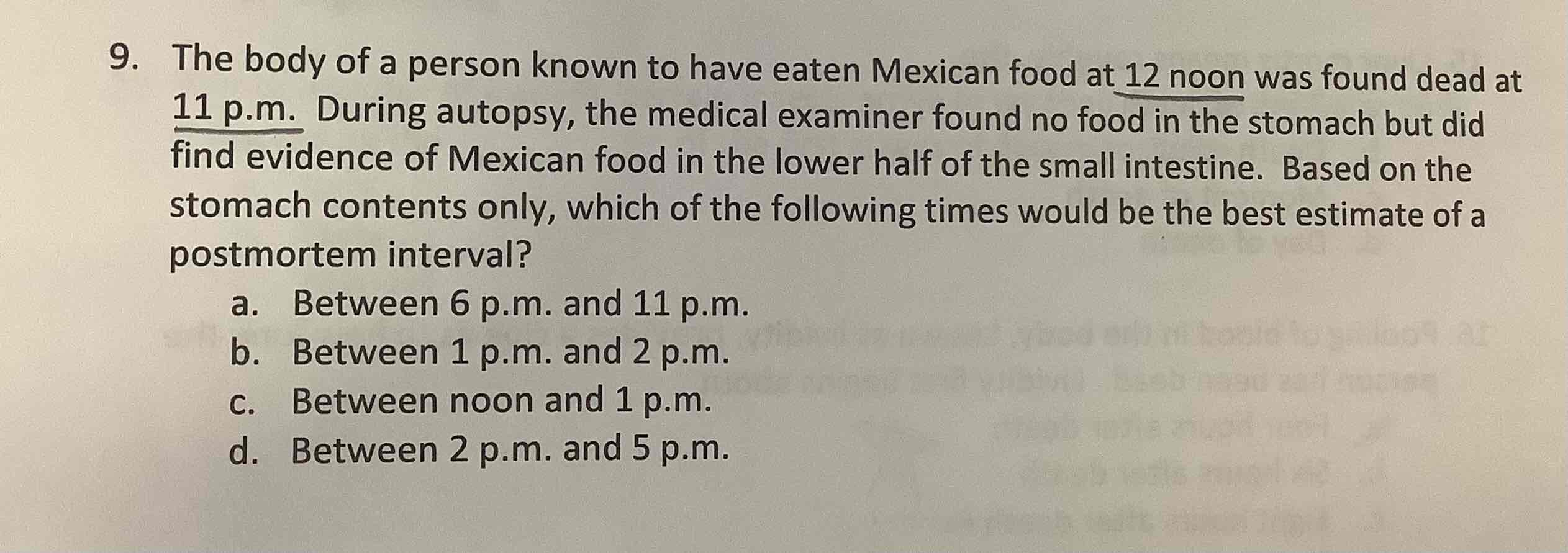Forensics: manner of death
1/23
There's no tags or description
Looks like no tags are added yet.
Name | Mastery | Learn | Test | Matching | Spaced |
|---|
No study sessions yet.
24 Terms
Usually children will lose more body heat more slowly than adults
False
An autopsy is preformed after an unexplained death to help explain the cause and manner of death
True
A person who was running away from someone before he or she dies will go into rigor mortis sooner than a person who was sitting quietly or resting
True
In the 17th century before the telescope was invented, anyone in a coma or with a heartbeat too weak to detect was presumed dead and were therefore buried
True
There are three ways a person can die, referred to in official terms as the manner of death: natural death, accidental death, and homicidal death
False
Natural death is caused by interruption and failure or body functions due to age or disease. This is the most common manner of death.
True
A homicide is always the death of one person caused by a minimum of two or more persons
False

Between 6pm and 11pm
An elderly woman with no living relatives accidentally falls from tripping over her bathrobe. She is unable to get back up due to a break in her leg. Due to internal bleeding, she passes away when her heart stops beating. The manner of her death would be:
Accidental
The way someone dies is called the
Manner of death
The reason someone dies, or the events that lead to someone’s death is called the
Cause of death
The underlying cause of death, as opposed to the final cause of death is called the
Proximate cause of death
The specific change in the body that brought about the cessation of life is called the
Mechanism of death
Livor mortis means, roughly
Death color
Pooling of blood in the body, known as lividity, provides a clue as to how long the person has been dead. Lividity first begins about
Two hours after death
Dual lividity occur of the body was kept in one position
Two hours after death and then moved to a second position before lividity became permanent
Rigor mortis is
Temporary
If a body shows no visible signs of rigor mortis it has probably been dead
Less than 2 hours or more than 48 hours
Factors affecting rigor include
Body weight, temperature, activity before death
The speed of ————, or the rotting of all tissue and organs in the body, depends on the age, size of the body, and nature of death.
Decomposition
Within minutes of death, certain insects arrive to lay their eggs on the warm body, attracted by the ——— of the first stages of decomposition
Smell
A rule of thumb PMI estimate is that if the body feels warm and stiff, it has probably been dead for
3-8 hours
—-——- accumulates inside the eye after death
Potassium
Eyes will began to cloud over after ——— hours if the eyes were closed upon death
24 hours